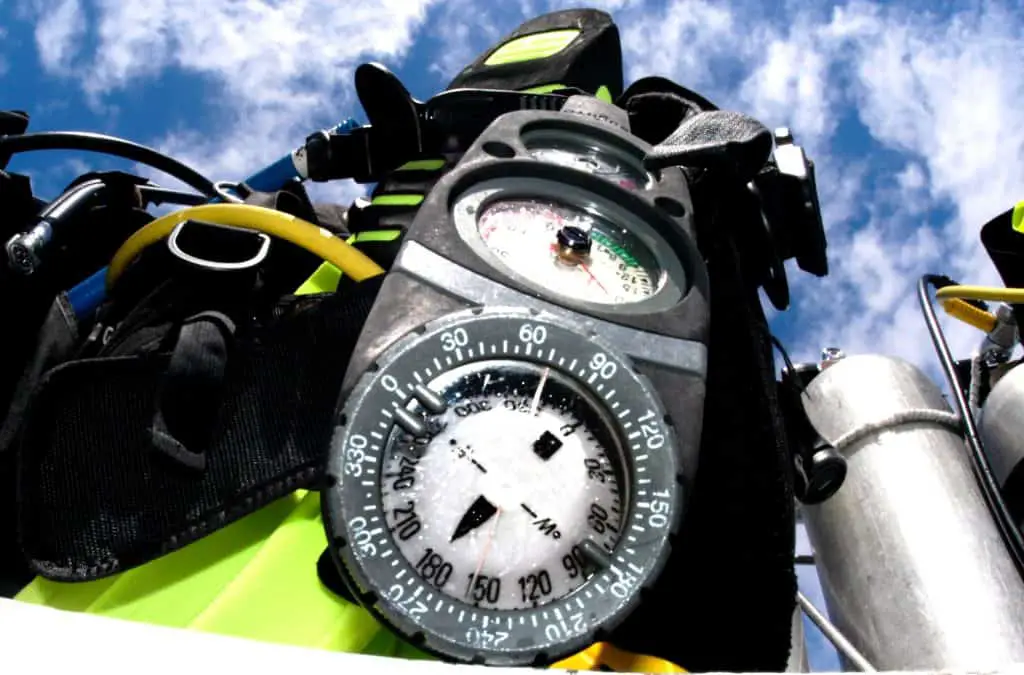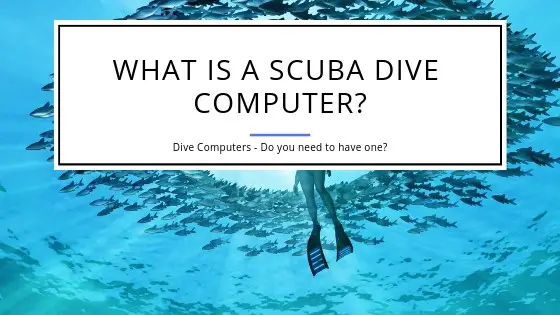What is a Scuba Dive Computer?
Before the age of dive computers it was necessary to use dive tables to figure out how long you can stay under water and how many stops you had to make when coming up to avoid risking decompression sickness. You also needed a depth gauge to measure your depth and a dive watch to know how long your dive was so far.
All these tasks are performed nowadays by using a dive computer. It replaces all three former instruments and combines them into one handy item that you can wear on your wrist or you can use a console-mounted model. It is worth to mention though that you should still use your dive tables to plan your dives. A scuba diving computer can only provide you with real-time data but will not help you with planning a dive.
Why Use a Personal Scuba Computer?
Diving causes Nitrogen to dissolve in your bloodstream. The longer and deeper the dive, the higher the concentration of Nitrogen in the blood. This requires a slower rate for ascending and longer decompression periods. If the ascend happens to quickly and with no safety stops then the Nitrogen builds bubbles in your bloodstream and tissue which expand when you come up. This causes decompression sickness which can be painful in the best case and fatal in the worst case.
This is like when you take a bottle of carbonated soda and you shake the bottle. When you open the cap, the sudden reduction in pressure causes the foaming of the soda when the carbonation is released. In principle it works similar when you come up too fast from a dive that requires a decompression stop during the ascend. It happens more slowly and less explosive. The concentrated Nitrogen bubbles and needs to escape somehow which in the worst case will end fatally.
Similar to the old-fashioned dive tables, these modern computing devices use a decompression model based on length, depth and air mix to monitor and calculate the Nitrogen concentration in your bloodstream and body. The computer tracks this information in real-time and continuously informs you of how long you have left. Following the instructions and alerts will ensure a safe dive with no decompression sickness. It’s an easy and reliable instrument to avoid a potentially fatal or at least very costly mistake when diving. A few hours in a hyperbaric chamber to treat decompression sickness will typically cost many thousands of dollars.

What to look for?
Dive computers vary in price. The cheaper models are typically geared towards the more recreational diver while the higher end, and more expensive, models typically have all the bells and whistles that a semi-professional or professional diver requires.
The recreational diver can safely go for entry level, up to mid-range models. You can expect that such a model would have a basic set of features that include:
- Easy to read and understand display
- Depth measure
- Dive time and time display
- Time remaining
- Ascent rate information
- Battery level tracking
- Capable of calculating safe dive times based on using pressurized air, Nitrox or Trimix
- Information about previous dives to track residual Nitrogen levels in the body from previous dives during the day

Higher end models should provide more features. You can expect them to have advanced features like:
- Dive watch features integrated
- Integrated compass
- Thermometer
- Capability to use different gases as the basis of calculations
- Measure air levels through a hose or wireless connecting to the regulator
- Allow to interface to your computer to track and download data from your dives
- Multiple decompression models that are automatically used based on dive parameters
Be clear about what kind of diver you are to pick the most reasonable device for your needs. If you typically only dive with air and in rather shallow environments you probably will not need a top of the line dive computer as you won’t use its capabilities.
It also will have to fit your existing equipment. It won’t help you to buy a high end scuba diving computer that could measure your air consumption if your regulator doesn’t allow to connect to it.
What is more important that the bells and whistles is that it is easy to handle the diving computer and that you can read it. Don’t forget that you want to make sure you can read the information with your mask on.
Another question you have to ask yourself is whether you prefer the data to be displayed as numbers or in the form of charts and symbols. This is typically personal preference but match what you like to the dive computer. It will help you read the data faster when you’re diving.

You also want to make sure you really understand how to use the computer. Check all the features out and memorize how to get to them before your first dive. You won’t have time to read the manual under water in case you’re stumped on how to get to specific information!
While it is important that you match your needs to the capabilities of the dive computer, you also do not want to buy a cheap model just because it’s cheap. Don’t forget that a reliable instrument like this can save you a lot of headaches and cost when diving. If it only saves you one visit to a decompression chamber, it paid for itself many times over!
Should you consider buying a used scuba diving computer?
Before answering this question you should consider what such a particular device is for you. Is it a gadget or an item that improves your ability to dive safely and, more importantly, come up safely again with no risks to your health?
Buying a used model typically means you do not know what happened to it before you get it. This might be fine if you buy a used comic book, but it’s a lot more difficult when you think about buying a used piece of safety equipment. Would you buy a used car seat for your child? Most likely not so you might want to stay away from buying a used dive computer.

An exception here is if you know the diver from which you want to buy the used equipment and you know he/she treated the computer well. In any case though you have to be aware that a used dive computer most likely will not have any warranty left on the device. Most manufacturers provide one year of warranty. Oceanic offers a lifetime warranty if the device has been serviced once a year by an authorized dealer.
It doesn’t seem worth you can save a few bucks on a used dive computer when you think of the potential risk. Your life could depend on this piece of equipment so it usually makes more sense to buy new instead of used.

